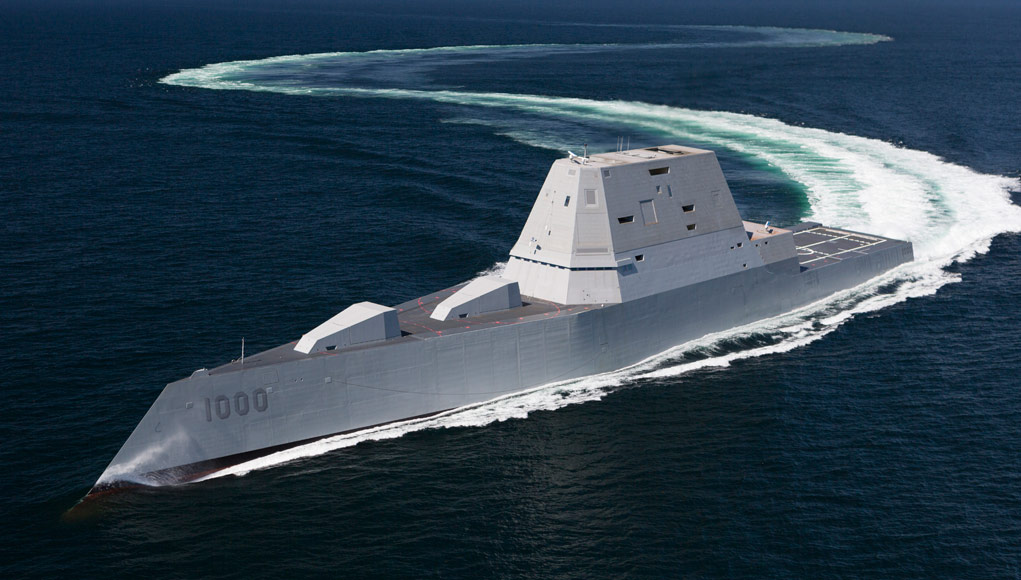On May 20, 2016, the U.S. Navy accepted delivery of the lead ship of the next generation, ‘electric ship’ guided missile destroyer, Pre-Commissioning Unit (PCU) Zumwalt (DDG 1000). The Navy announced the home port of the new combatant at Naval Base San Diego following its commissioning in Baltimore, on October 15 this year. Zumwalt is scheduled to arrive in San Diego in late 2016.
Stationing destroyers in a West Coast port support the rebalance to the Indo-Asia-Pacific region, placing our most advanced capabilities and greater capacity in that vital theater. By 2020, approximately 60 percent of Navy ships and aircraft will be based in the region.
Zumwalt is the first U.S. Navy surface combatant to employ an innovative and highly survivable Integrated Power System (IPS) distributing 1000 volts of direct current across the ship. The IPS’ unique architectural capabilities include the ability to allocate all 78 megawatts of installed power to propulsion, ship’s service, and combat system loads from the same gas turbine prime movers based on operational requirements.
DDG 1000 is the lead ship of a class of next-generation multi-mission surface combatants tailored for land attack and littoral dominance with capabilities to defeat current and projected threats. Zumwalt will triple naval surface fires coverage, add an improved SONAR system to track deep and shallow water threats, as well as pace current anti-ship cruise missile threats. For today’s warfighter, DDG 1000 fills an immediate and critical naval warfare gap, meeting validated Marine Corps fire support requirements.
The 610-foot, wave-piercing tumblehome ship design provides a wide array of advancements. The shape of the superstructure and the arrangement of its antennas significantly reduce radar cross section, making the ship less visible to enemy radar at sea.
Each ship in the class features a battery of two Advanced Gun Systems, capable of firing Long-Range Land Attack Projectiles (LRLAP) that reach up to 63 nautical miles, providing three-fold range improvement in naval surface fires coverage. Each ship has 80 Advanced Vertical Launch System cells storing various weapons including Tomahawk cruise missiles, Evolved Sea Sparrow and Standard air defense missiles, and Vertical Launch Anti-Submarine Rockets (ASROC) (VLA).
The ship will employ active and passive sensors and a Multi-Function Radar (MFR) capable of conducting area air surveillance, including overland, throughout the extremely complicated and cluttered sea-land interface.
The multi-mission DDG 1000 is tailored for sustained operations in the littorals and land attack, and will provide independent forward presence and deterrence, support special operations forces, and operate as an integral part of joint and combined expeditionary forces. Its multi-mission design and littoral capabilities make it a 100 percent globally deployable asset to the Fleet.
Construction of Zumwalt commenced in Feb. 2009 at the General Dynamics-Bath Iron Works (BIW) in Baltimore. The ship was launched on Oct. 29, 2013. BIW is also constructing follow-on ships, the future Michael Monsoor (DDG 1001) and Lyndon B. Johnson (DDG 1002).
Currently, the ship is conducting Hull, Mechanical, and Electrical tests and trials with a subsequent period to follow for combat and mission system equipment installation, activation, and testing.


















